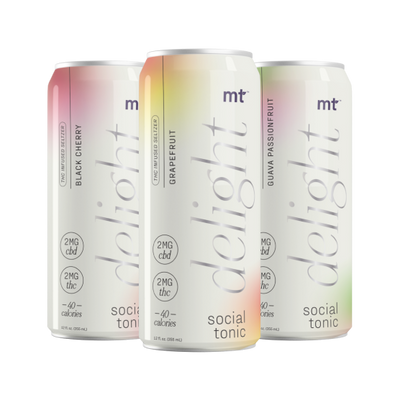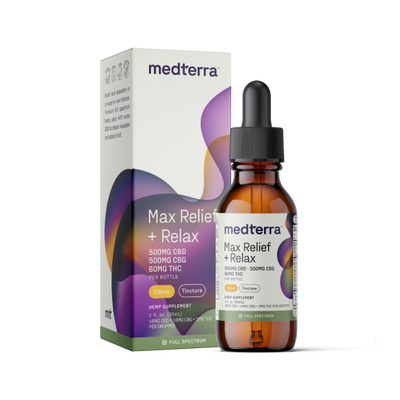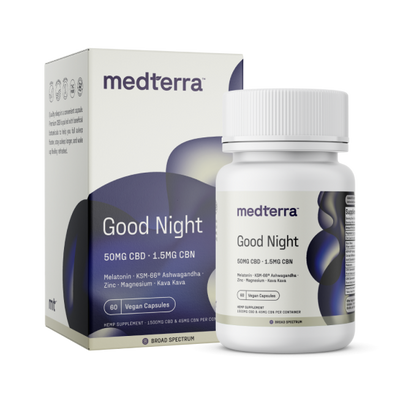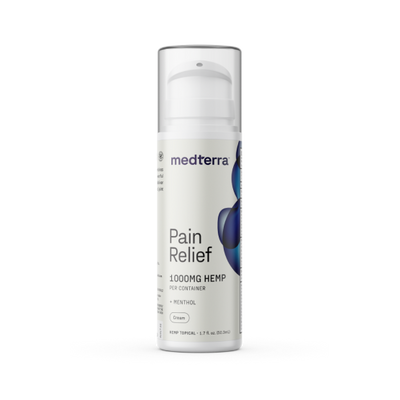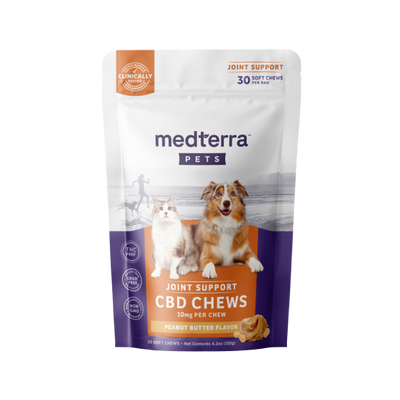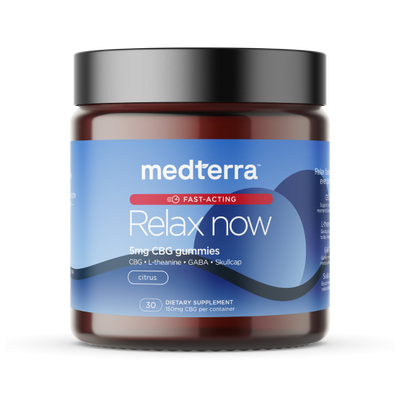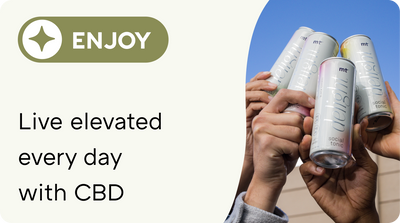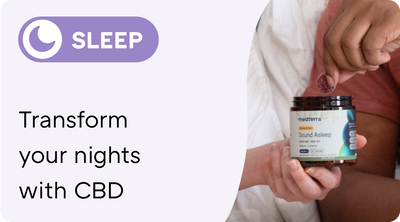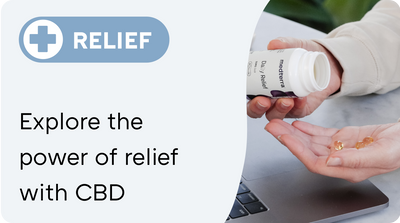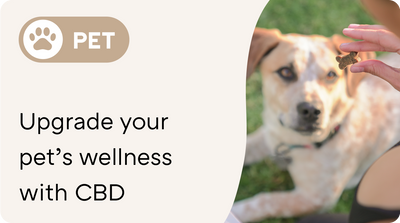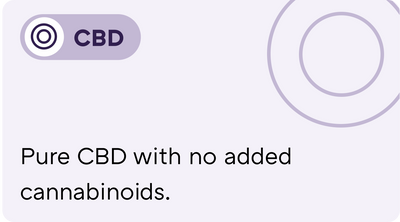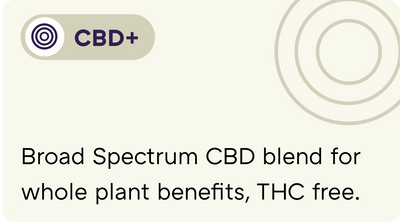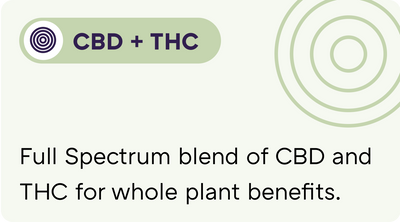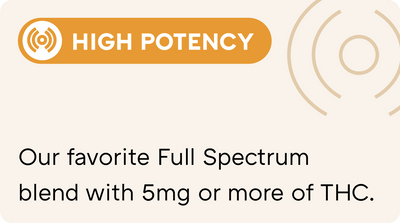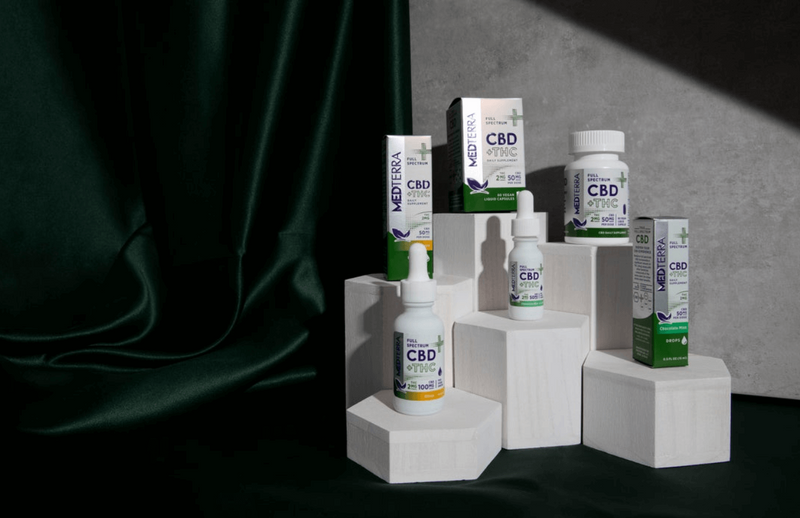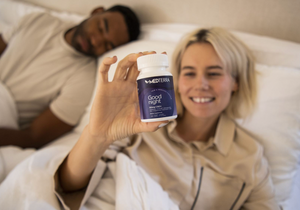When it comes to harnessing all of the hemp plant’s natural power, full-spectrum CBD is one of the best ways to go. It’s true — full-spectrum CBD is among the most popular types of CBD for a reason. But what is full-spectrum CBD, exactly? It’s a question that many people have on their minds. In this guide, we’ll be diving deep into everything you need to know about full-spectrum CBD. Topics covered will include:
- What Is Full-Spectrum CBD?
-
What Major Cannabinoids Are Included in Full Spectrum?
-
CBD, THC, CBG, CBN, And other minor cannabinoids & terpenes below.
- Full-Spectrum CBD: The Benefits
- What Are the Types of Full Spectrum?
- The Difference Between Full-Spectrum CBD and Broad-Spectrum CBD
- The Difference Between Full-Spectrum CBD and CBD Isolate
- Full-Spectrum CBD: Are There Any Downsides?
What Is Full-Spectrum CBD?
To put it simply: Full-spectrum CBD is any CBD oil or concentrate that contains a full spectrum of hemp’s most active ingredients. What active ingredients, you might ask? Good question. If you were to take hemp into the lab and analyze it, you’d find something like this:
-
Biomass: 75%, CBDa: 20, Linalool: 1.5, THCa: .3, CBCa: .3, CBGa: .3, Ocimene: .3, Pinene: .3, 50-100 other compounds: 2% total
Hemp, as you can see, is quite chemically diverse. Leading researchers have called its impressive blend of active ingredients a “pharmacological treasure trove” for some very good reasons (1). And the above list is just the start. If you leave out hemp’s biomass content and zoom in on its active ingredients, you’ll find even more chemical diversity. The hemp plant contains cannabinoids like:
- CBD
- CBDa
- CBDv
- THC
- THCa
- THCv
- CBG
- CBN
- CBC
And terpenes like:
- Pinene
- Linalool
- Eugenol
- Limonene
- Eucalyptol
- Beta-caryophyllene
And polyphenols like:
- Cannflavin A
- Cannflavin B
- Lignanammides
- Stilbenoid derivatives
A true full-spectrum CBD product will contain as many of these active ingredients as possible. At the very least, full-spectrum CBD needs to contain both cannabinoids (including .3% or less THC) and terpenes. If CBD is missing its THC component or its terpenes, then it’s not truly full spectrum. [caption id="attachment_1234" align="alignnone" width="903"] Isolate, Broad and Full Spectrum CBD[/caption]
What Cannabinoids Are Included in Full Spectrum?
Don’t worry — you won’t find any more lists in this section. Instead, we’ll be taking a deeper look at several of full-spectrum CBD’s most important cannabinoids. Beginning with CBD, of course!
CBD
CBD is the hemp plant’s most important cannabinoid. Mature hemp contains up to 25% CBD. Full spectrum CBD also contains a high amount of its namesake ingredient, though exact CBD percentages may be diluted by a CBD oil’s carrier oil. What does CBD do? Research has stated that CBD, by binding to receptors in the endocannabinoid and endovanilloid systems, may:
-
“Interfere with cortisol production" (2),
-
Be a “therapeutic agent for the prevention of obesity" (3),
-
“Significantly inhibit and delay destructive insulitis and inflammatory Th1-associated cytokine production” (4)
-
Have “anti-nausea/anti-emetic effects” (5)
As if that weren’t impressive enough, full-spectrum CBD oil usually also contains CBD’s raw form, CBDa. While CBDa doesn’t engage the endocannabinoid system as directly as CBD does, it still offers some pretty impressive potential health benefits. CBDa seems to be great for gut health: ancient cultures may have used it to combat parasites (6), and even today people might benefit from its ability to alleviate intestinal discomfort (7).
THC
THC is probably the most [in]famous cannabinoid of them all. It’s the one that gives cannabis the power to get people high! But that’s far from the only thing THC does. The trace amounts of THC in full-spectrum CBD may help CBD work even better — some researchers suspect that THC has an important role in the entourage effect. Like CBD, certain studies have hinted that THC may promote full-body balance.
CBG
If CBD is the most important cannabinoid in full-spectrum CBD, then CBG is probably the most important of the trace cannabinoids. Studies have explained that it may quench inflammation (8) and lower intraocular pressure (9). But most impressive are CBG’s potential microbe-inhibiting effects. “CBG proved to be marvelous at tackling pathogenic bacteria," one recent study reported (10).
CBN
CBN is pretty much CBG’s opposite; virtually all cannabinoids are formed from CBG, and virtually all cannabinoids break down into CBN. CBN seems to bind to many different endocannabinoid receptors, which may explain its pleasantly relaxing effects (11). Most full-spectrum CBD products only contain a little CBN — but even this trace amount may be enough to add to the entourage effect.
Full-Spectrum CBD: The Benefits
As we said at the very start of this article, full-spectrum CBD’s popularity stems from something very simple: you can really feel its benefits. A 2015 study from the world’s leading cannabis research lab found full-spectrum extracts to be four times more effective per unit than isolated CBD (12). The reason for this difference? It’s likely explained by full-spectrum CBD’s ability to activate the entourage effect.
What Are the Types of Full-Spectrum CBD?
Full-spectrum CBD, like any other type of CBD, can come in many different forms. It can be taken via capsule or tincture/oil or edible, applied via cream or oil or skincare product, and added to favorite foods and drink recipes. Different delivery methods have different strengths and weaknesses, of course. Most people prefer taking their full-spectrum CBD in the form of a CBD oil. This type of CBD is certainly effective, since it has a fairly good absorption rate and long-lasting effects (13).
The Difference Between Full-Spectrum CBD and Broad-Spectrum CBD
The difference between full-spectrum CBD and broad-spectrum CBD can be summed up in a single acronym: THC. Indeed, broad-spectrum CBD is characterized largely by the THC that it lacks. Just like full-spectrum CBD, broad-spectrum contains CBD, other cannabinoids, and terpenes. Some people view broad-spectrum CBD as the best of both worlds, though it’s still unclear exactly how much people are missing out on with the whole THC-free thing. Broad-spectrum CBD is a frequent favorite for people who undergo frequent drug testing for work.
The Difference Between Full-Spectrum CBD and CBD Isolate
CBD isolate is a unique type of hemp extract that contains just CBD — it’s free from all of hemp’s trace cannabinoids, terpenes, flavonoids, and other active ingredients. Thanks to its high purity, CBD isolate takes a flavorless, scentless, crystalline form. It’s easy to incorporate into other products, which is exactly what the makers of many CBD-infused beverages do. But this isn’t actually a good thing. CBD isolate has a low binding affinity for the body’s endocannabinoid receptors; it isn’t recognised or absorbed all that fully. Unlike the 20+ molecular targets that full-spectrum CBD has, CBD isolate only has a few (14).
Full-Spectrum CBD: Are There Any Surprises?
In short, yes, a couple: -You might test positive on a drug test for THC -It may cause more drowsiness in some people than non-THC CBD (15). Most of these effects are conditional — CBD doesn’t usually cause drowsiness or dry mouth, for example, unless you take more than your body needs. Allergic reactions to full-spectrum CBD are probably the rarest of CBD’s negative effects. Normally they only occur when someone has a severe terpene allergy; if you’re allergic to pine trees or citrus and feel that using CBD gives you a similar reaction, you might consider simply lowering the amount of CBD you take.
Summing Things Up
If you’re looking to immerse yourself in the world of natural wellness, improve your health, and destress your life, then full-spectrum CBD is one of the best ways to do it. It’s one of the most effective ways to activate your endocannabinoid system and achieve full-body balance. And if you’re ready to try full-spectrum CBD, Medterra is one of the best ways to go! We offer a wide selection of full-spectrum, ultra-broad spectrum, and isolate CBD products. It’s CBD you can trust.
REFERENCES
Plant cannabinoids: a neglected pharmacological treasure trove. (2005). PubMed. https://www.ncbi.nlm.nih.gov/pmc/articles/PMC1751232/
Zuardi, A. W. (1993). Effect of cannabidiol on plasma prolactin, growth hormone and cortisol in human volunteers. PubMed. https://pubmed.ncbi.nlm.nih.gov/8257923/
Parray, H. A. (2016). Cannabidiol promotes browning in 3T3-L1 adipocytes. PubMed. https://pubmed.ncbi.nlm.nih.gov/27067870/
Cannabinoids as novel anti-inflammatory drugs. (2009). PubMed. https://www.ncbi.nlm.nih.gov/pmc/articles/PMC2828614/
Parker, L. A. (2011). Regulation of nausea and vomiting by cannabinoids. PubMed. https://pubmed.ncbi.nlm.nih.gov/21175589/
Culpeper, N. (2018). The Complete Herbal. Outlook Verlag.
Rock, E. M. (2018). Effect of cannabidiolic acid and ∆ 9-tetrahydrocannabinol on carrageenan-induced hyperalgesia and edema in a rodent model of inflammatory pain. PubMed. https://pubmed.ncbi.nlm.nih.gov/30225659/
In Vitro Model of Neuroinflammation: Efficacy of Cannabigerol, a Non-Psychoactive Cannabinoid. (2018, July 1). PubMed Central (PMC). https://www.ncbi.nlm.nih.gov/pmc/articles/PMC6073490/
Colasanti, B. K. (1990). A comparison of the ocular and central effects of delta 9-tetrahydrocannabinol and cannabigerol. PubMed. https://pubmed.ncbi.nlm.nih.gov/1965836/
Researchers uncover hidden antibiotic potential of cannabis: May serve as a lead for new drug development. (2020). ScienceDaily. https://www.sciencedaily.com/releases/2020/02/200226131325.htm
Molecular Targets of the Phytocannabinoids-A Complex Picture. (2017). PubMed. https://www.ncbi.nlm.nih.gov/pmc/articles/PMC5345356/



